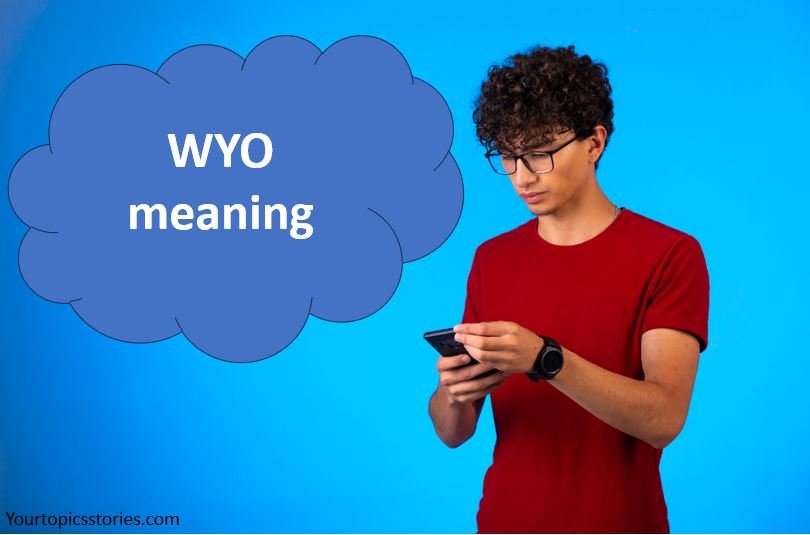In today’s fast-paced world of texting, social media, and digital conversations, abbreviations and acronyms have become essential. Among these, IDK is one of the most commonly used. If you’ve ever found yourself in a situation where you’re unsure or don’t have an answer, IDK is likely the phrase you’d turn to. This article delves into the IDK Meaning, its origins, usage, and why it has become such a staple in modern communication.
Also, explore YHU Meaning: Understanding the Internet Acronym
What Does IDK Stand For?
The IDK Meaning is simple and straightforward: it stands for “I Don’t Know.” It’s a quick and convenient way to express uncertainty or a lack of knowledge in text-based conversations. Whether you’re chatting with friends, replying to a colleague, or participating in a social media discussion, IDK has become the go-to phrase for those moments when you genuinely don’t have the answer.
Origin of IDK
The origins of IDK are rooted in the evolution of internet slang and text messaging culture. Acronyms like IDK began gaining traction in the late 1990s and early 2000s when character limits in text messages (like the 160-character SMS limit) encouraged brevity.
By the early 2010s, IDK had cemented its place in digital communication. Its popularity soared alongside platforms like MSN Messenger, AIM, and later, social media giants like Facebook and Twitter. Today, it remains one of the most universally recognized acronyms.
How is IDK Used?
The versatility of IDK Meaning makes it applicable across various scenarios. Here’s how it’s commonly used:
- Texting and Instant Messaging
- Expressing uncertainty:
- “What’s the plan for tomorrow?”
- “IDK, I’ll ask later.”
- Avoiding conflict:
- “Who should we blame for this mistake?”
- “IDK, let’s discuss it.”
- Expressing uncertainty:
- Social Media
- IDK is often used in posts, comments, or replies to show a lack of knowledge or to spark conversation:
- “IDK why this meme is so funny, but I can’t stop laughing.”
- IDK is often used in posts, comments, or replies to show a lack of knowledge or to spark conversation:
- Workplace Communication
While IDK might seem too informal for professional settings, it is sometimes used in casual workplace chats or brainstorming sessions:- “What’s the status of the new project?”
- “IDK, I’ll check with the team.”
Cultural Impact of IDK
The IDK Meaning extends beyond its utility in conversations; it has influenced the way people express uncertainty and approach information gaps.
1. Promoting Honesty
By saying IDK, individuals acknowledge their limitations and promote transparency. It’s a subtle reminder that it’s okay not to have all the answers.
2. Fostering Curiosity
Often, IDK is followed by a commitment to find the answer. For example:
- “IDK the capital of that country, but let me Google it!”
3. Humor and Relatability
Memes and jokes often use IDK to capture the collective confusion or uncertainty of a situation. For instance:
- “Why do bad things happen to good people? IDK, but pass the chocolate.”
Variations and Alternatives
While IDK is widely recognized, several variations have emerged to add context or emotion to the expression:
- IDRK: “I Don’t Really Know”
- Adds a layer of doubt:
- IDRK if this plan will work, but it’s worth a shot.
- Adds a layer of doubt:
- IDGI: “I Don’t Get It”
- Expresses confusion rather than a lack of knowledge:
- “IDGI, why is everyone obsessed with this trend?”
- Expresses confusion rather than a lack of knowledge:
- IDKW: “I Don’t Know Why”
- Provides a reason for uncertainty:
- “IDKW this keeps happening, but it’s frustrating.”
- Provides a reason for uncertainty:
Examples of IDK in Everyday Use
To better understand the IDK Meaning, here are some real-life examples:
- In Casual Conversations
- “What do you want for dinner?”
- “IDK, you choose.”
- On Social Media
- “IDK if I should watch another episode or go to bed.”
- In Group Discussions
- “Who’s taking the lead on this project?”
- IDK, maybe we should decide in the next meeting.
The Role of IDK in Digital Communication
The IDK Meaning symbolizes the shift toward a more casual and conversational tone in digital communication. Its brevity and universality make it a favorite among users of all ages and demographics.
1. Saving Time
Typing IDK is much faster than spelling out “I don’t know,” making it ideal for quick replies.
2. Universality
Unlike some slang terms that are niche or generational, IDK is understood by nearly everyone who engages in digital communication.
3. Adaptability
IDK can be used in various tones—serious, humorous, or indifferent—depending on the context.
Criticism and Misinterpretation
Despite its popularity, IDK is not without its drawbacks:
- Perceived Indifference
- In some cases, using IDK might come across as dismissive or apathetic:
- “What should we do next?”
- “IDK.”
- In some cases, using IDK might come across as dismissive or apathetic:
- Overuse
- Constant reliance on IDK may hinder meaningful conversations or problem-solving.
- Informality
- While acceptable in casual settings, IDK might be seen as unprofessional in formal communication.
Fun Facts About IDK
- Multilingual Usage: Non-English speakers often adopt IDK because of its simplicity and universal appeal.
- Emoji Pairing: Many users pair IDK with emojis, such as 🤷♀️ or 🤷♂️, to add emotion to their messages.
Conclusion
The IDK Meaning—“I Don’t Know”—is more than just an acronym; it’s a reflection of modern communication’s need for efficiency, honesty, and relatability. From casual chats to social media posts, IDK has become a staple expression, bridging gaps in knowledge with brevity and clarity.
Whether you’re genuinely unsure or simply trying to keep a conversation light, IDK is the perfect acronym for today’s fast-paced, digital-first world. So, the next time you don’t know something, just type IDK—because sometimes, simplicity speaks volumes.



